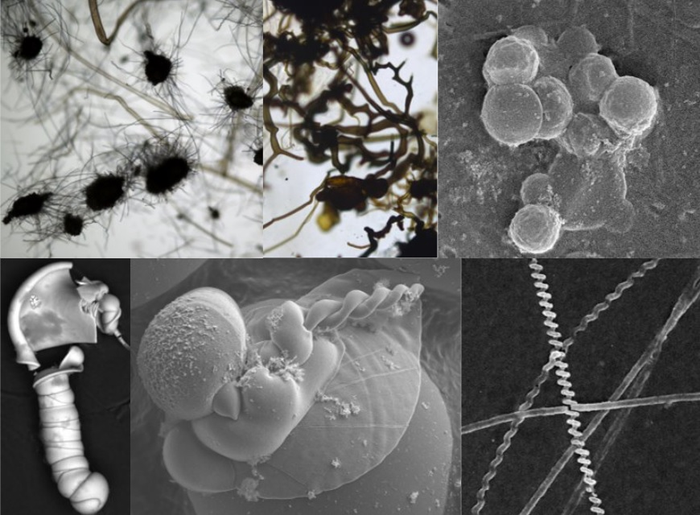Scientists looking for life on Mars could be fooled by fossil-like chemicals, study suggests
Scientists identify processes that produce chemical structures mimicking life-signature molecules

Your support helps us to tell the story
From reproductive rights to climate change to Big Tech, The Independent is on the ground when the story is developing. Whether it's investigating the financials of Elon Musk's pro-Trump PAC or producing our latest documentary, 'The A Word', which shines a light on the American women fighting for reproductive rights, we know how important it is to parse out the facts from the messaging.
At such a critical moment in US history, we need reporters on the ground. Your donation allows us to keep sending journalists to speak to both sides of the story.
The Independent is trusted by Americans across the entire political spectrum. And unlike many other quality news outlets, we choose not to lock Americans out of our reporting and analysis with paywalls. We believe quality journalism should be available to everyone, paid for by those who can afford it.
Your support makes all the difference.The search for ancient microbic life on Mars could be misled by non-biological deposits that look very similar to real fossil specimens, according to a new study.
Fossil-like specimens created by the planet’s chemical processes could be construed to be the real deal, pointed out review research published in the Journal of the Geological Society on Wednesday.
This is because they look very similar to actual specimens but actually just “mimic” potential biological samples.
Such signs of life can be so closely mimicked by the planet’s non-biological deposits that the origins of any fossil-like specimens found on the Red Planet by robotic explorers from Earth are likely to be very ambiguous, said the study, which could help find better ways to detect life-signature molecules in future space exploration missions.
Telling these chemical deposits apart from life-signature molecules on the Martian surface – which may have been temporarily habitable four billion years ago – could be key to the success of current and future missions to the Red Planet, according to the scientists, including those from the University of Edinburgh and the University of Oxford in the UK.
All known processes that could create lifelike deposits in rocks on Mars were reviewed by the researchers, including Sean McMahon, chancellor’s fellow in Astrobiology at the University of Edinburgh’s School of Physics and Astronomy and Julie Cosmidis, associate professor of Geobiology at the University of Oxford.
Until now, knowledge of most of these processes has come from “serendipitous discoveries” rather than “systematic research” and remains poorly understood, the researchers pointed out.
“The success of major current and forthcoming rover missions now calls for significant efforts to mitigate this risk,” they wrote in the study.
The scientists identified dozens of processes that can produce chemical structures very similar to simple, microscopic lifeforms that may once have existed on Mars.
“We have been fooled by life-mimicking processes in the past. On many occasions, objects that looked like fossil microbes were described in ancient rocks on Earth and even in meteorites from Mars, but after deeper examination they turned out to have non-biological origins,” Dr Cosmidis said in a statement.
Many more such processes producing chemical deposits that look like bacterial cells and carbon-based molecules – indicative of microscopic life – are still undiscovered, they said.

The researchers call for “deeper and more extensive research” to shed light on how interactions between minerals, fluids and organic matter on Mars could have produced “misleading false biosignatures.”
“At some stage a Mars rover will almost certainly find something that looks a lot like a fossil, so being able to confidently distinguish these from structures and substances made by chemical reactions is vital,” Dr McMahon said.
“This article is a cautionary tale in which we call for further research on life-mimicking processes in the context of Mars, so that we avoid falling into the same traps over and over again,” Dr Cosmidis added.
Join our commenting forum
Join thought-provoking conversations, follow other Independent readers and see their replies
Comments